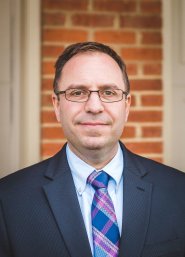
Mark Klee; Adjunct Professor – Eastern Kentucky University
I know what you are thinking “From Reality to Model” shouldn’t that be the other way around? As an engineer at Toyota for the past 24 years I often encounter manufacturing processes that have slowly de-optimized. And now, just by walking by the processes on the floor, I can see waste (motion, waiting, over-processing). I know this means that these processes need some work.
Our typical method of improving these processes would be to employ the traditional Toyota Production System tools. We begin with observation and time study. Then we use video for motion analysis making these processes visual on paper with standardized work combination tables, standardized work charts, and production capacity calculations. Through these simple analysis tools, the waste in the process becomes more obvious and begins to generate ideas for improvement.
This is typically done one process or one zone of processes at at time. It is also usually done with paper, pencil, and stopwatch. The methods have proven time and again to be effective for process improvement and an effective method of developing engineers as well as manufacturing floor members in process improvement.
After the waste is discovered and the improvement ideas generated it is time to try some improvement ideas. The process visualization and capacity calculation documents are then modified to simulate the improvement idea. Then it is time to try the modified process on the production floor. The concept is tested in a controlled environment. After success is documented, the process standards are modified the team is trained to the new standard.
Using ProModel works very well with the Toyota Production System and as a method for developing manufacturing engineers, manufacturing floor members and students in manufacturing focused curriculum. In Eastern Kentucky University’s Applied Engineering and Management class, we follow this progression.
- We first focus on learning process observation and visualization skill using the standard Toyota Production System tools.
- Next we learn the processes of implementing controlled change in a mass production environment. We learn and practice these skills on the manufacturing floor to gain real world experience.
- After learning the basics of observation and improvement, we come back to the classroom where we employ ProModel to fine tune our processes and learn if there are any opportunities for optimization that may have been overlooked.
- With ProModel we can also test scenarios that may be difficult to test on the actual production floor like moving a piece of equipment, modifying a cycle time, changing a conveyor length or changing a delivery frequency.
- These trials can be done as quickly as you can change the numbers in the model allowing for many more cycles of trial and error or trial and success in a shorter time.
As a result of the course and ProModel, students have deeper understanding of both the theory and application of process improvement allowing them to be an instant contributor to a manufacturing organization upon their graduation.
In the end, deeply understanding the current reality through observation, documentation, and modification of the current process helps us make a more accurate model. The result of the more accurate model is further optimization. This deepens learning and the improvement cycle continues.
Brief Bio:
Mark Klee, BS Eastern Kentucky University 1990, MS Purdue University 1992
Toyota Motor Manufacturing Kentucky 1994-Present
Eastern Kentucky University Adjunct Faculty 2012-Present
